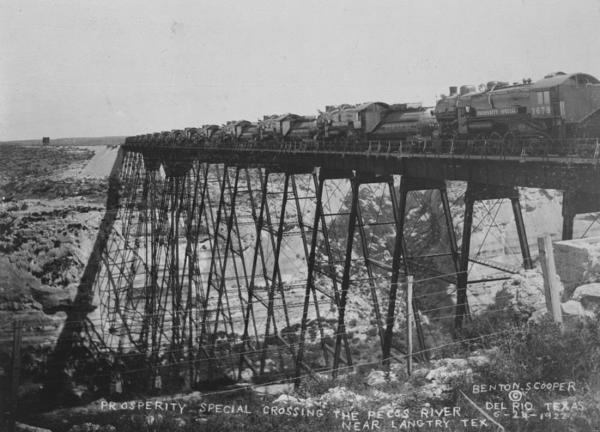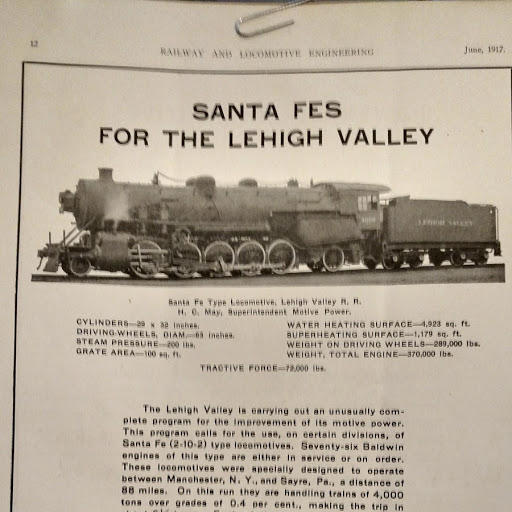I dug this info out of the internet.
The Southern Pacific Co. was very aware of the recession that the country was experiencing and early in 1921. In a move that would hopefully send a message of optimism and faith in the economy to their passengers, customers, shippers and the rest of the country, the Southern Pacific placed an unprecedented expensive order to the Baldwin Locomotive Works in Pennsylvania for 50 2-10-2 locomotives specifically designed for heavy mountain terrain.
Samuel Vauclain, President of the Baldwin Locomotive Works had a sense of what a train of new locomotives could do for the image of Baldwin, and the morale of the country. As the completion date of the locomotive order came near, Vauclain contacted every newspaper and radio station on the proposed delivery route to publicize the event. On May 27th, 1922, 24 of the 50 new locomotives went west out of the Baldwin Locomotive Plant to East St. Louis, took the Cotton Belt Line across Texas and was switched to Southern Pacific tracks in El Paso. Thousands of spectators lined the tracks to see an almost half mile long train made up entirely of new locomotives cross the country bound for California. A large sign was erected on the lead locomotive that read, ‘The Prosperity Special’. The special arrived at Taylor Yard in Los Angeles in early June.
Half of the order of 50 locomotives stayed in Los Angeles to run heavy freights over Beaumont Hill and Tehachapi Pass. The rest of the locos went to Sacramento for duty over the Sierra Nevadas.













